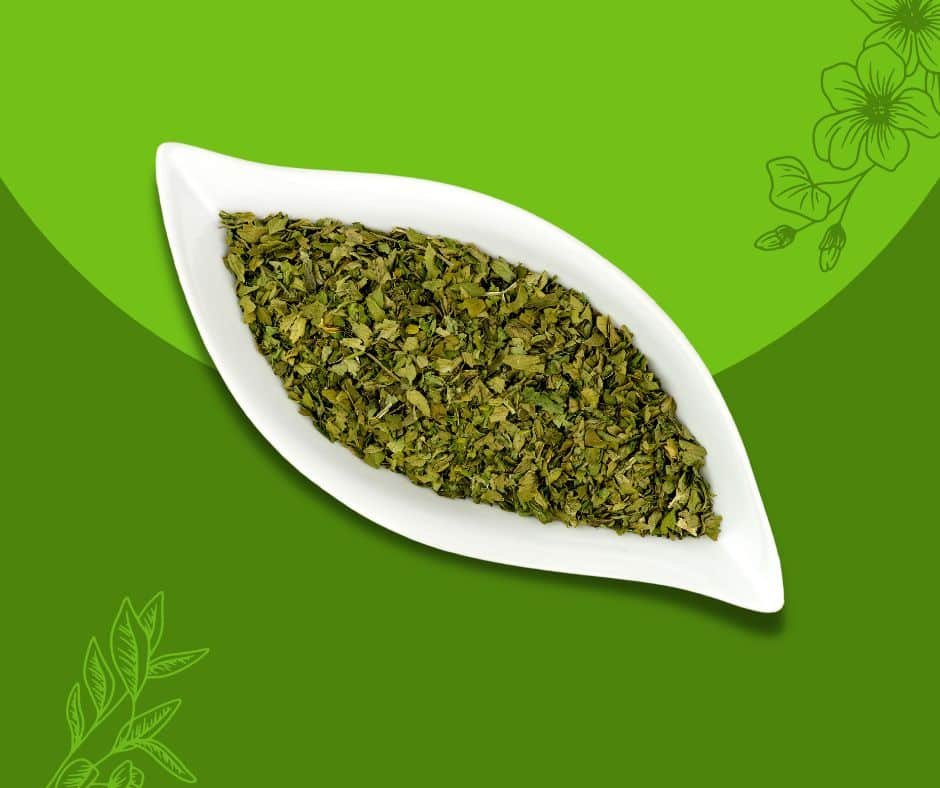Unlock the full potential of your dehydrator with The Ultimate Guide to Dehydrator Recipes! This comprehensive ebook is your go-to resource for crafting delicious, healthy, and long-lasting snacks and meals. Perfect for beginners and experienced dehydrating enthusiasts alike, this guide provides everything you need to know to boost your kitchen game.

Dehydrating Parsley: A Step-by-Step Guide to Preserve Your Herbs
Parsley is a popular herb used in various dishes, from stews and soups to salads and sauces. While it’s great fresh, dehydrating parsley makes it a versatile addition to your collection of dried herbs. That’s because dehydration concentrates the flavor, making adding parsley to a wide range of dishes much more effortless. Let’s look at how you can start dehydrating parsley at home.
How to Dehydrate Parsley for Ultimate Flavor
Choosing the Right Parsley
When it comes to choosing the right parsley for dehydrating, there are a few factors to consider. First, you’ll want to select fresh parsley with no signs of wilting or yellowing. This ensures that your dried parsley will have the best flavor and aroma. Both curly-leaf and flat-leaf parsley varieties dehydrate well, so you can choose based on your personal preference. If you’re growing your own parsley, make sure to harvest it at the peak of its flavor and aroma. This usually means picking the leaves in the morning after the dew has dried but before the sun gets too hot.
Prepping the Parsley
To start, begin with fresh parsley. Using a salad spinner can help remove excess moisture from the parsley leaves after washing them. First, wash the leaves in cold water and then pat them dry with a kitchen towel or paper towel until they are completely dry. Remove any yellowing leaves before proceeding, as these will not rehydrate properly once dried. Once your parsley is prepped and ready, you can start dehydrating it!
Dehydrating Method Using a Food Dehydrator
The most common method for drying parsley and other herbs is using a
Tips for Achieving Perfectly Dry Parsley
To achieve perfectly dry parsley, there are a few tips to keep in mind. First, make sure to dry your parsley in a single layer, either on a dehydrator tray or on a baking sheet. This helps prevent the parsley from steaming instead of drying. Dry your parsley at a low temperature, around 95°F (35°C), to preserve the delicate oils and flavor compounds. Finally, be patient and don’t rush the drying process. Depending on the method you’re using, it may take several hours or even days to achieve perfectly dry parsley. Remember, the goal is to have parsley that is crispy and brittle, ensuring it’s completely dry.
Common Mistakes to Avoid
When dehydrating parsley, there are a few common mistakes to avoid. One of the most frequent errors is drying the parsley at too high a temperature, which can cause it to lose its flavor and aroma. Another mistake is not drying the parsley thoroughly enough, which can lead to mold or spoilage. Finally, be sure to store your dried parsley in an airtight container to preserve its flavor and aroma. Avoid storing it in a container with too much empty space, as this can cause the parsley to lose its flavor and color more quickly. Proper storage is key to maintaining the quality of your dried parsley.
Storage Tips Using an Airtight Container
Once your parsley has been successfully dried, it is important to store dried parsley in an air-tight container away from heat or light sources. The key here is keeping air exposure to a minimum so that your dehydrated parsley retains its flavor over time.
What is the Best Parsley to Dehydrate?
The best type of parsley for dehydrating is a fresh herb like flat-leaf Italian parsley, also known as flat-leafed or curly-leafed parsley. This parsley has more flavor than the more common curly-leaf variety, making it ideal for dehydrating. Once you’ve chosen your preferred type of parsley, wash the leaves thoroughly before drying them out to clear any dirt or bacteria that might be present on the leaves.
How Long Does Dehydrated Parsley Last?
Dehydrated parsley will last up to six months if stored properly in an air-tight container away from direct sunlight and other heated places such as stovetops or radiators. Air drying is another method that can be used to preserve parsley, especially in dry climates. To ensure maximum shelf life, regularly check for any signs of mold or discoloration on your stored herbs; if you spot any, discard them immediately and replace them with fresh herbs.
What Can You Make With Dehydrated Parsley?
Dehydrated parsley is a versatile ingredient used for many different cooking applications. Parsley stems can also be dried and used in various recipes. It can be used as an herb in soups, salads, dressings, and sauces.
You can also use it to season roasts, steaks, vegetables, and other dishes. Additionally, its mild flavor pairs well with many other herbs, making it a great addition to many recipes.
Dehydrated parsley can also be used to make herbal tea. Steep a teaspoon or two of the dried herb in hot water for several minutes before straining and drinking. This tea is excellent for helping with digestion and reducing inflammation and is a good source of Vitamin C.
Dehydrated herbs are incredibly versatile ingredients that can liven up many different dishes! Parsley is one herb that works incredibly well when dry because it holds onto its flavor quite well throughout the dehydration process. With these simple steps for how to dehydrate parsley at home, you’ll have delicious herb flavor available whenever you need it! So whip out those dehydrating sheets, power up the dehydrator, and get ready for some delightful recipes fueled by dehydrated herbs!


